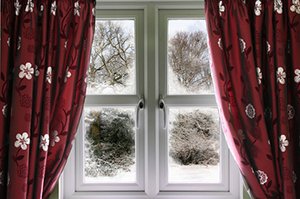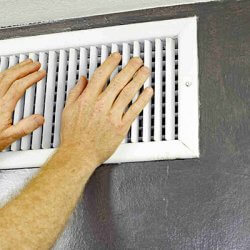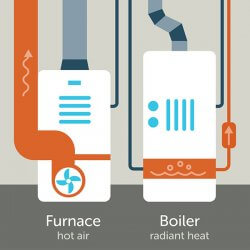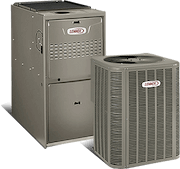
Are you constantly reaching for an extra blanket or another sweater while sitting on the couch? This might be a sign that your furnace might not be keeping your home warm and may point to larger issues with your heating and cooling system or your home.
Galmiche & Sons has more than 60 years of furnace experience in the St. Louis area, offering comprehensive repair and solutions to common problems. We will be happy to help diagnose your home’s gas or electric furnace issues. Contact our heating & air conditioning experts today, and we’ll help you get started!
Is Your Furnace the Problem?
If your home feels cooler than it should, your furnace might not be to blame for your chilly home. There are a variety of other factors that can influence the temperature of your home. A good way to identify if you need to contact an HVAC expert to examine your furnace is to check your home for these 5 common problems:
1. Old Windows
Are your windows transferring your home’s heat to the outside? In older homes, the act of a home settling can cause windows not to fit their frames, leaving gaps for air to leak out. Additionally, older windows are simply less energy efficient than newer ones, and are more likely to leak. You can install new windows or used window sealing kits in the winter, which are DYI-friendly and available from most home improvement centers.
2. Poor Insulation
How well is your home insulated? The insulation in your home’s attic and walls can disintegrate or become compressed from gravity. That could result in parts of your home’s barrier to the outside temperature becoming compromised. Examine the insulation in your attic to see if it is still up to snuff or in need of replacement.

3. Leaking Seals
How are the seals around your doors and windows? The seals around exterior doors and window can deteriorate over time, creating cracks and a badly sealed home. All that work your furnace is doing to heat your home could be escaping outside. Luckily, you can use caulk to reseal broken or cracked seals on all doors and windows. It is a quick purchase from a home improvement store and easy enough for most homeowners to tackle.
Also, don’t forget to examine your door’s weather-stripping – that line of rubber that helps seal the bottom of the door. This is frequently one of the biggest leaks in a home. Replacement weather-stripping is cheap and easily available.
4. Leaky Ductwork
Look for ductwork leaks. The ducts in your home are what carry the heated air from your furnace throughout your home. These can be tricky to check for leaks since they are embedded in your home’s wall, floors, and ceilings. However, it is crucial that these are sealed properly to prevent leaks and ensure proper airflow. Some things you can check include:
- Check around your registers for dust. That could be a sign of air not moving through the ducts properly.
- Are certain rooms or areas noticeably colder than other parts of the house? That could mean a segment of air ducts is obstructed.
- If you can see part of your ductwork, perhaps in the garage, basement or attic, examine them for sign of damage, tears in the metal or pieces not being attached, anything that could lead to leaks.
- An HVAC technician can evaluate your heating system, and pin-point if the problem lies with the ducts or the furnace.
5. Old or Malfunctioning Thermostat
Is your thermostat functioning properly? Your thermostat could be misguiding your home’s furnace, after all your thermostat is the command center of your heating and cooling system.
- Your thermostat might be shutting off your furnace before it reaches your desired temperature. Check the thermostat’s programmed schedule and target temperature to ensure these are set as you intend.
- It also might not be turning on your furnace at the right time, or correctly detecting your home’s ambient temperature. Check the batteries or perform a reset.
- Also, make sure that your thermostat was designed to work with your brand of furnace. A quick look at the manual or manufacture’s website might help.
Another consideration that may seem simple, but is often overlooked, is to check is if your furnace is on and the unit has power. If you are still having problems with a chilly home but don’t see any of the above common signs, it’s time to take a look at your home’s furnace.
Furnaces are designed with safety switches that will make sure to shut off the unit if there is a problem with overheating or some kind of detected malfunction. Your furnace may need repair if it is unexpectedly off. This points to issues with the ignition system or the motor which blows the warm air into the ducts.
Contact Us for Furnace Repair Services in St. Louis
At Galmiche & Sons, our team of professional technicians have many years of experience repairing gas furnaces and electric furnaces alike. Contact our heating & air conditioning company today with any questions about your furnace or to schedule a maintenance check today!









